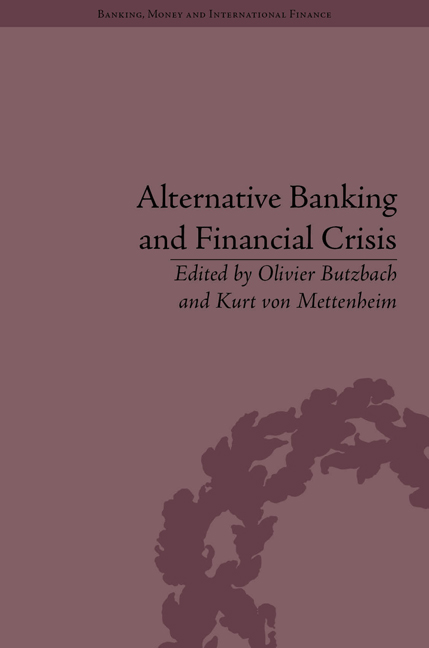Book contents
- Frontmatter
- CONTENTS
- Acknowledgements
- List of Contributors
- List of Figures and Tables
- Introduction
- Part I Historical Context and Conceptual Framework
- Part II Comparative Country Cases
- 5 A Qualitative and Statistical Analysis of European Cooperative Banking Groups
- 6 The Persistence of the Three-Pillar Banking System in Germany
- 7 Alternative Banks in a Dualistic Economy: The Case of Italy before and during the Euro Crisis
- 8 Alternative Banks on the Margin: The Case of Building Societies in the United Kingdom
- 9 The United States: Alternative Banking from Mainstream to the Margins
- 10 BRIC Statecraft and Government Banks
- 11 Cooperative Banks in India: Alternative Banks Impervious to the Global Crisis?
- Conclusion
- Notes
- Index
10 - BRIC Statecraft and Government Banks
from Part II - Comparative Country Cases
- Frontmatter
- CONTENTS
- Acknowledgements
- List of Contributors
- List of Figures and Tables
- Introduction
- Part I Historical Context and Conceptual Framework
- Part II Comparative Country Cases
- 5 A Qualitative and Statistical Analysis of European Cooperative Banking Groups
- 6 The Persistence of the Three-Pillar Banking System in Germany
- 7 Alternative Banks in a Dualistic Economy: The Case of Italy before and during the Euro Crisis
- 8 Alternative Banks on the Margin: The Case of Building Societies in the United Kingdom
- 9 The United States: Alternative Banking from Mainstream to the Margins
- 10 BRIC Statecraft and Government Banks
- 11 Cooperative Banks in India: Alternative Banks Impervious to the Global Crisis?
- Conclusion
- Notes
- Index
Summary
Introduction
Until 2008 developing countries systematically fared worse during financial crises. After Mexico declared a moratorium on foreign debt in 1982, most of Latin America remained mired in a lost decade. During the 1990s the global south and east experienced financial crises in a seemingly endless sequence: Mexico, 1994–5; Asia, 1997; Russia, 1998; Brazil, 1999; Argentina and Turkey, 2001; Brazil, 2002–3. In 2007 panic in US financial markets quickly spread around the globe, only to find that BRIC countries were better prepared to counter shocks and resume growth. This chapter explores our findings about Brazilian federal government banks (that, since liberalization, they have modernized and realized competitive advantages to provide critical policy alternatives, most notably against crisis and for social inclusion) compared to Russia, India and China. Further research will be required; other factors mattered and barriers to competition remain, especially in Russia and China. However, evidence from monetary authorities and comparison of bank balance sheets suggest that BRIC government banks did indeed realize competitive advantages over private and foreign banks during the 2000s, just in time to provide counter-cyclical credit in 2008. And contrary to biases in microfinance studies against the public sector, BRIC government banks have helped accelerate financial inclusion through new policies and technologies.
- Type
- Chapter
- Information
- Alternative Banking and Financial Crisis , pp. 179 - 210Publisher: Pickering & ChattoFirst published in: 2014



